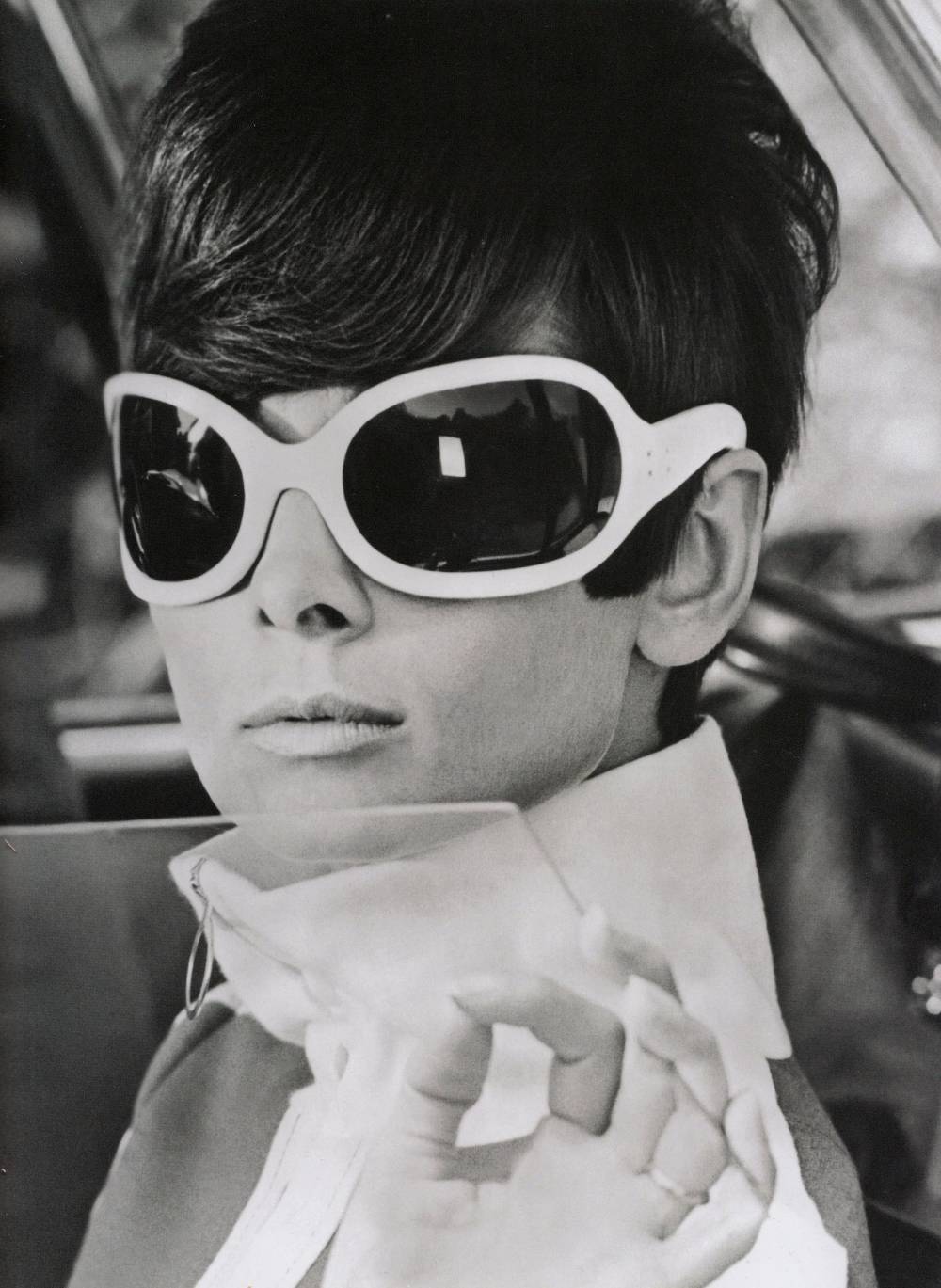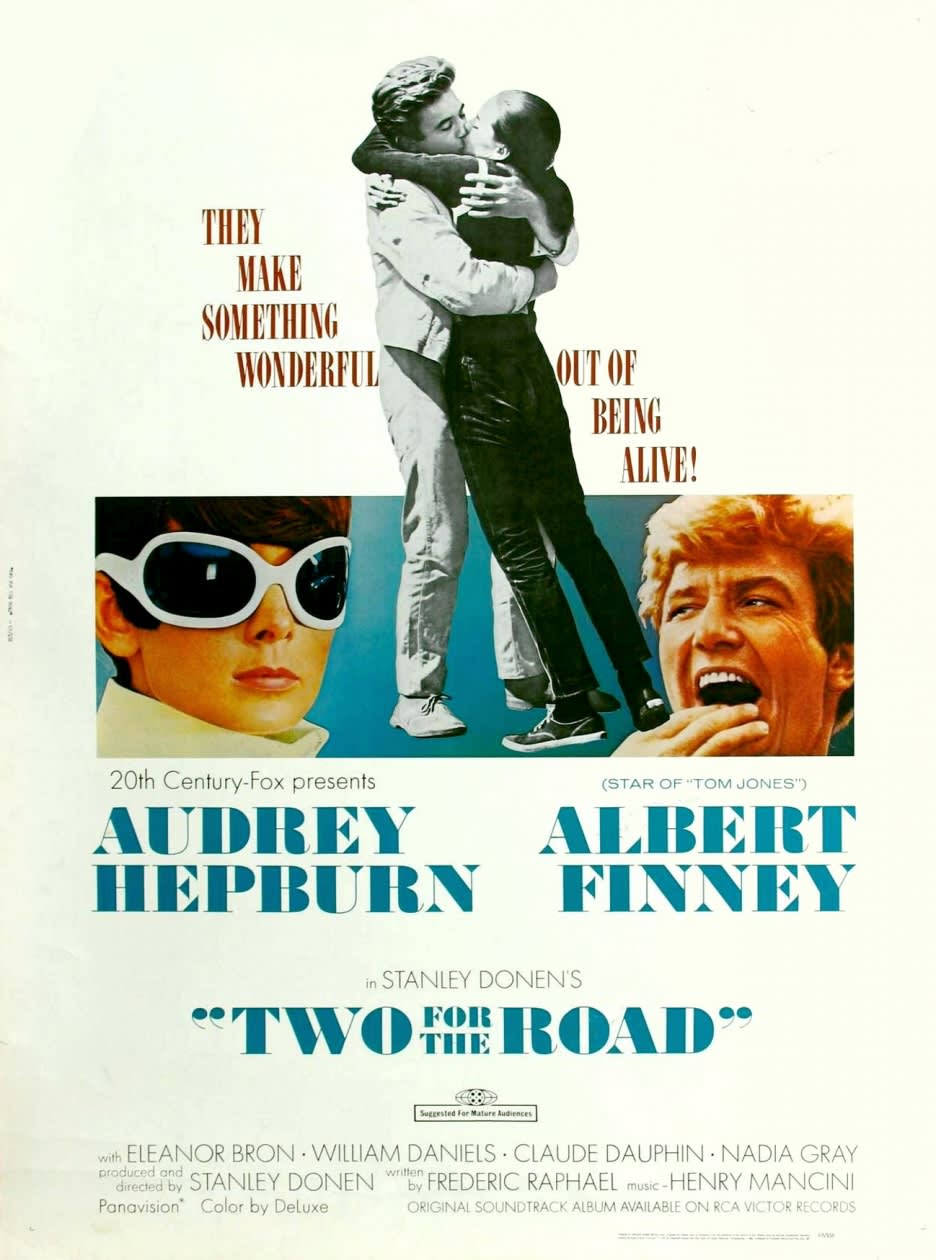
Two for the Road
Poster, 1967
The name Audrey Hepburn has forever been synonymous with timeless elegance, sophistication, and understated glamour. Her repertoire of Hollywood filmography by the beginning of the 1960’s alone – which included classics such as Roman Holiday (1953), Sabrina (1954), Funny Face (1957), and Breakfast at Tiffany’s (1961) – established both an on-screen and off-screen image of the starlet for which she became known and beloved. As such, it comes as no surprise that in 1967 when Hepburn graced the silver screen for the 23rd time in esteemed director Stanley Donen’s film Two for the Road, her character’s daring, fashion-forward wardrobe ignited shock and dismay that transcended Hollywood and had Audrey diehards abuzzing.
Set in the South of France, the dramatic romantic comedy chronicles a couple that journeys through the past and present turmoil of their twelve-year relationship. Through a series of flashbacks – and personal style evolutions – the viewer grows to understand how Joanna – played by Ms. Hepburn – and her husband, Mark Wallace – played by Albert Finney – have drifted apart throughout their whirlwind relationship. Unlike the previous characters played by the Belgium actress, Joanna is daring, seductive and a model of modernity; perhaps the very reason why Two for the Road is often cast aside in the recitation of Hepburn’s most important roles. While some fans prefer the blossoming image of hopeless romantic Sabrina Fairchild, the naiveté of Princess Ann, or the glamour of Holly Golightly, to ignore Joanna Wallace would be a crime against film and, even more notably, against fashion.
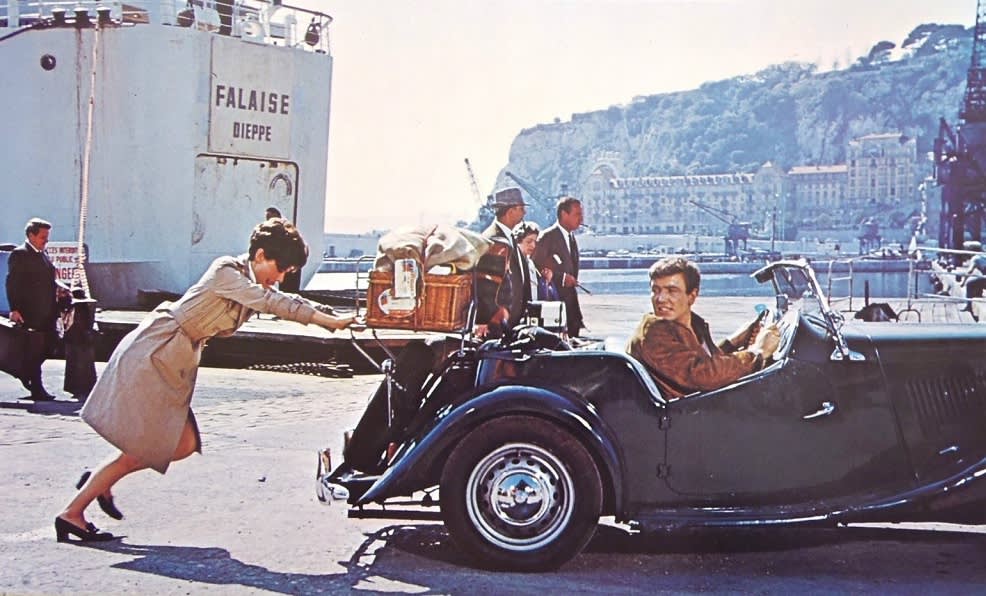
Two for the Road
Audrey Hepburn and Mark Wallace, 1967
Above all, Two for the Road serves as both an intentional turning point in Hepburn’s career – away from the Givenchy couture-wearing characters of her former days and into the realm of 1960s, youthquake culture – while proving how interconnected fashion and film must be in projecting a successful, believable narrative. Joanna’s outfits, for which she had a total of 32 throughout the course of the film, were a reflection of her vivacious spirit and the trends – and hemlines – that embodied the world of mod fashion at the time. A critical means of storytelling, the film’s costumes were instrumental in portraying the evolution of Mark and Joanna’s relationship and respective personalities.
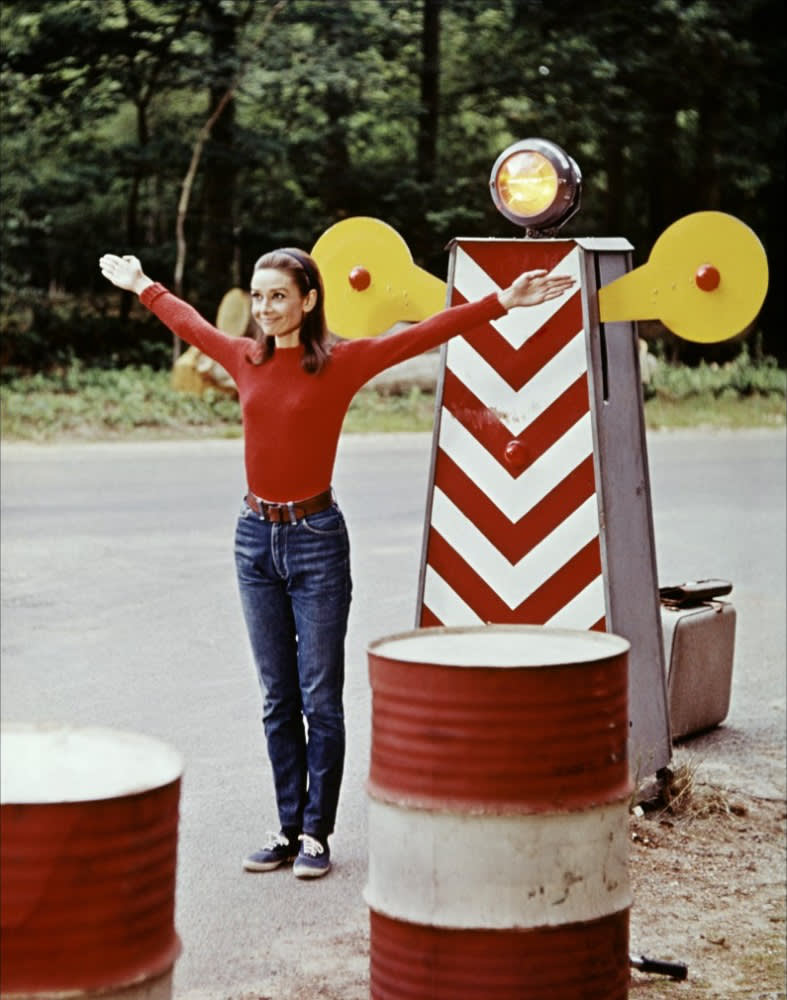
Two for the Road
Audrey Hepburn as Joanna, Wearing Timwear sweater, Levi's, Gucci belt, League for Montgomery Ward tennis shoes
Revered by the fashion community, Two For the Road is a cinematic snapshot of all things chic and daring in world of 1960s style. Featuring clothing by dozens of the era’s hottest designers – many of whom were part of the decade’s Swinging London scene – Hepburn’s shorter hemlines, A-line dresses, futuristic accessories, and outfits composed of experimental materials and synthetic fabrics were a shock to those most well acquainted with her previous work.
Paco Rabanne for Two for the Road
Unwearable Dress, 1967
Paco Rabanne for Two for the Road
Unwearable Dress, 1967
Paco Rabanne for Two for the Road
Visor Glasses, 1967
Arguably the most iconic and daring of Joanna’s costumes was ‘The Unwearable Dress’ designed by fashion maverick Paco Rabanne. Composed of metal plates chained together by tiny rings, the paillette mini dress was styled with matching earrings and Charles Jourdan silver lamé shoes, and served as the most literal and tactile representation of 1960s experimentation featured throughout the film. Likewise, ‘The Steve McQueen PVC Suit’ was designed by Michèle Rosier for V de V and consisted of a matching black vinyl jacket and pants, which Hepburn claimed was the most uncomfortable outfit she had ever worn. Nonetheless, polyvinyl (PVC) grew in popularity throughout the ensuing decades and became instrumental in the future of fashion, later used by designers such as Alexander McQueen and Vivienne Westwood for its allusion to fetishism.
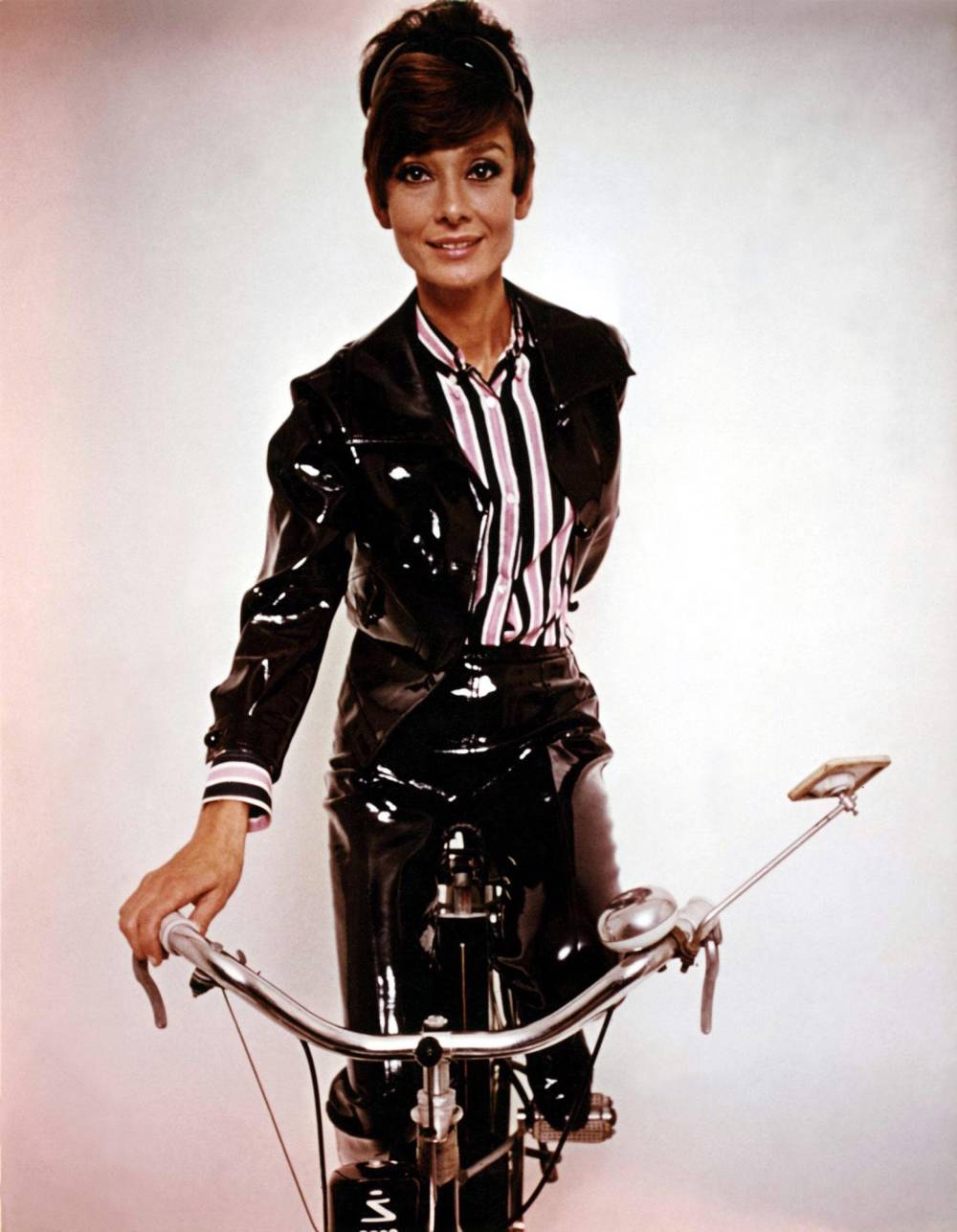
Michele Rosier for Two for the Road
PVC Suit, 1967
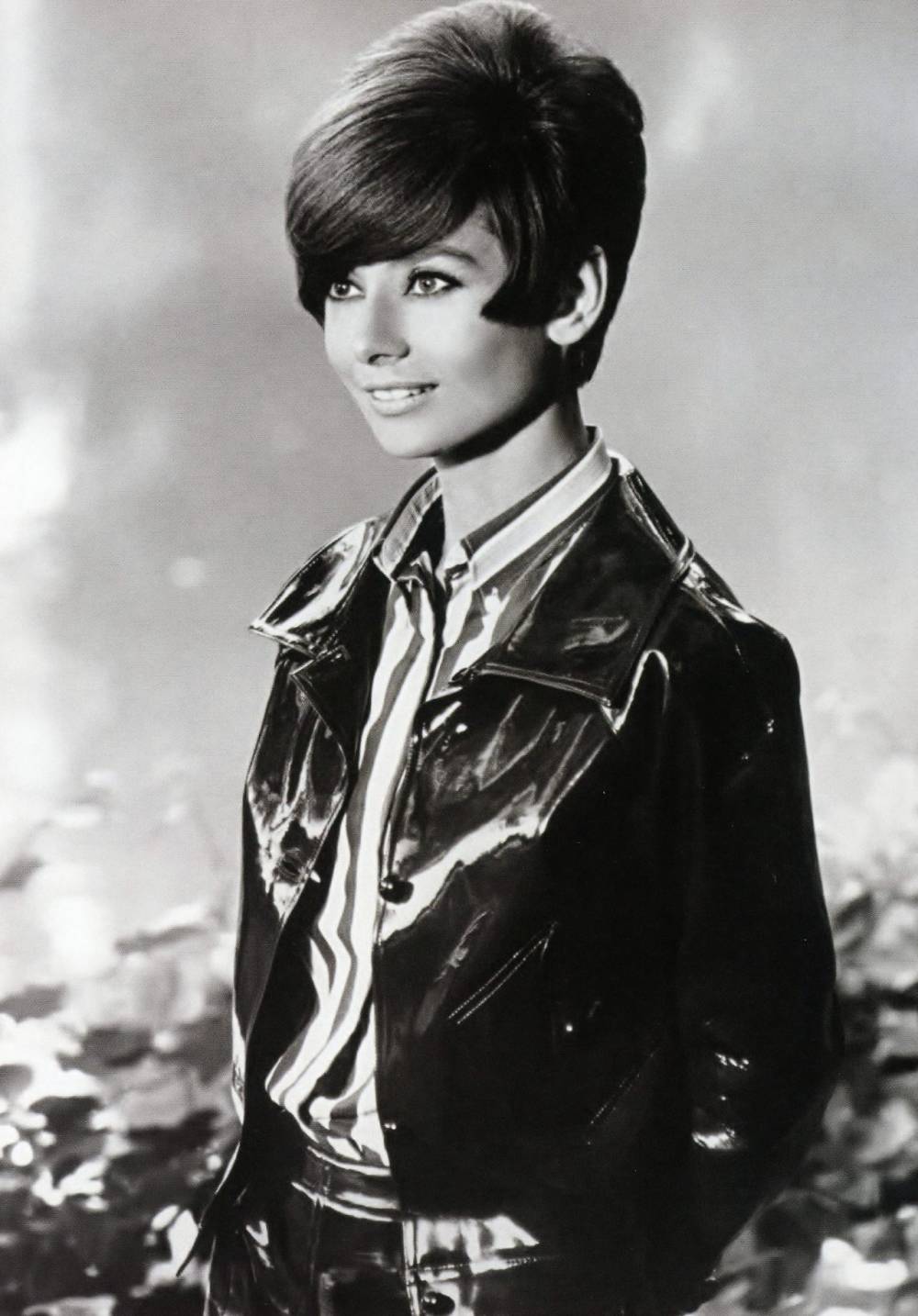
Michele Rosier for Two for the Road
PVC Suit, 1967
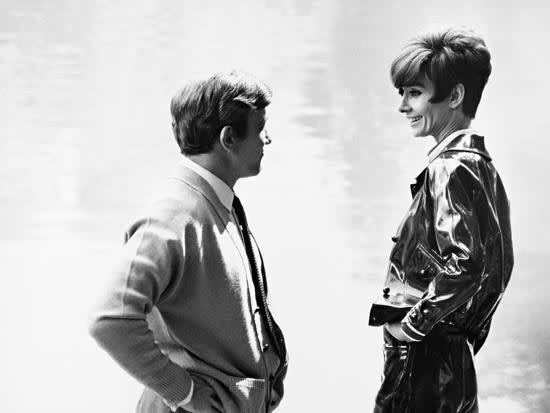
Michele Rosier for Two for the Road
PVC Suit, 1967
Despite the film’s focus on experimental fashion, not all of the featured costumes veered so heavily towards the avant-garde. Joanna’s daywear looks included an A-line miniskirt by futuristic designer André Courrèges, styled with an orange Cacharel button-down shirt and matching circular frame sunglasses by Oliver Goldsmith, as well as a classic beige double breasted Burberry trench coat, Ferragamo penny loafers, and numerous jersey dresses in vivid colors and silhouettes. For example, 'The Bird Dress' made by eccentric American designer Ken Scott, featured a psychedelic floral motif atop silk jersey and long bell sleeves, and was accompanied by a matching scarf and shoes by René Mancini. Hepburn, who came up with the name ‘Bird Dress,’ said that the feminine design was her favorite of Joanna’s 32 outfits. Scott was amongst the film’s most represented designers, making numerous outfits specifically for Audrey, including a Pink Picnic Ensemble with translucent plastic buttons, and casual black and white cotton t-shirts which were styled with complimentary sailor-style trousers decorated with metal studs by Rose Bertin.
Two for the Road
André Courrèges miniskirt, Cacharel shirt, and Goldsmith glasses in hand
Ken Scott for Two for the Road
The Bird Dress, 1967
Ken Scott for Two for the Road
Pink Picnic Ensemble, 1967
Given the film’s costal setting, Joanna’s plethora of seaside looks was as diversified as her daywear and evening ensembles. From a Mod Beach Outfit by Michèle Rosier that consisted of a large block pattern jacket of translucent and yellow vinyl closed by a plastic zipper, worn with matching vinyl shorts, a belt and tote bag – echoing her black PVC suit by the same designer – to solid and patterned lycra one piece bathing suits by Ken Scott, Givenchy swim caps, and a knitted Miss Dior two-piece featuring boy-style shorts; Joanna’s bold swim attire was both chic and representative of her equally daring personality.
Michèle Rosier for Two for the Road
Mod Beach Outfit, 1967
Ken Scott for Two for the Road
Bathing Suit, 1967
Ken Scott for Two for the Road
Bathing Suit, 1967
Miss Dior for Two for the Road
Knit bikini, 1967
Furthermore, her appetite for adventure and fearless attitude was illustrated through a number of daytime ensembles featuring Levi Jeans, simple knit sweaters and classic tennis shoes, suggesting that beneath the glitz and glamour of Joanna’s more daring outfits, lies a simple girl who is ready to take on the world.
Two for the Road
Rodier sweater and Levi's, 1967
Two for the Road
1967
While the importance of mid-20th century fashion and costuming to the success of Two for the Road’s storyline is no less palpable today than it was at the film’s inception, what may be lost on contemporary audiences is the influence that the film, in turn, had on fashion and culture of the late 1960s. Upon its release in 1967, shoppers immediately yearned to look, act and dress more like Joanne Wallace, while the white YUHU Oliver Goldsmith glasses worn by Hepburn in the official movie poster achieved super-status and were featured in a host of the era’s most iconic fashion magazines. Furthermore, the film was also a big step in the personal and public cultivation of Audrey Hepburn’s image, a successful leap for the actress into a more experimental and modern realm. While many will forever consider Hepburn an ethereal beauty, her prowess for a new beginning through film and fashion mustn’t ever be overlooked.
